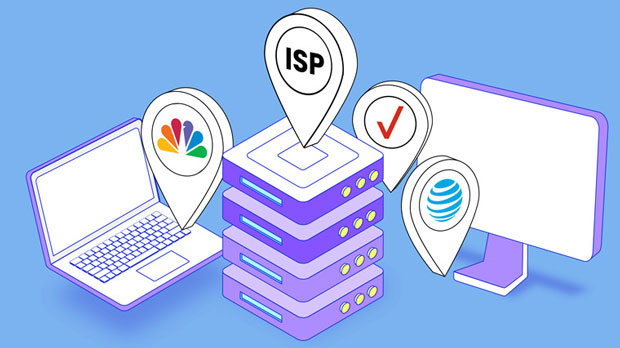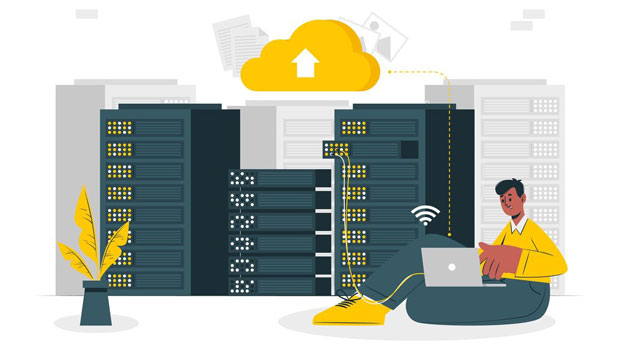When selecting an HTTP proxy for automation tools, two leading options often come into consideration: ProxyRack and PYPROXY. Both services offer a range of features tailored to enhance the performance of automated tasks such as web scraping, data collection, and automated browsing. However, understanding which of these services provides superior support for automation tools requires a deeper look into several key areas, such as ease of integration, performance, reliability, and scalability. In this article, we will compare ProxyRack and PyProxy in detail, evaluating each service based on these critical factors to determine which one is more suitable for automated operations. Overview of ProxyRack and PyProxyTo start, it’s important to define both ProxyRack and PyProxy in the context of HTTP proxy services. ProxyRack is often marketed as a simple yet powerful proxy solution that works well with automation tasks. It’s particularly known for its Python-based API, which allows seamless integration with Python-based automation tools. On the other hand, PyProxy is a more expansive proxy service that offers a wide variety of proxy types, including residential and data center proxies. It’s often favored for its versatility and large network of proxy nodes, which can be particularly useful for large-scale automated projects.Both services offer reliable proxy rotations, but the specific capabilities of each one can differ significantly depending on the use case. Understanding how each proxy service supports automated tools will help users make an informed choice.Ease of Integration with Automation ToolsThe ease with which a proxy integrates with automation tools is a primary factor in determining its effectiveness. For ProxyRack, the Python-based API is its standout feature. Since Python is one of the most commonly used languages for automation tasks, especially in web scraping and data mining, ProxyRack provides a direct integration path for developers using Python scripts. The API allows users to quickly set up and manage proxy connections without much complexity. Additionally, ProxyRack’s straightforward setup makes it an ideal choice for developers who prefer to use native libraries and scripts without needing to configure complex proxy management systems.PyProxy, on the other hand, supports a wider range of programming languages and platforms. While it doesn’t offer a Python-specific API, PyProxy provides a more general API that is compatible with Python, JavaScript, and other common automation languages. For teams that need cross-platform support or work in languages other than Python, PyProxy’s versatile API might be more appealing. Moreover, PyProxy offers browser extensions and integrations with other automation platforms, which can be a valuable asset for teams using a diverse set of tools.Performance and SpeedIn the world of automated tasks, proxy speed and performance are critical. Whether it's web scraping or conducting automated research, slow proxy speeds can significantly impact the efficiency of the automation process. Here, PyProxy excels due to its extensive proxy network, which includes both residential and data center proxies. With such a large pool of proxies, PyProxy ensures that users can access fast and reliable connections from various global locations, minimizing downtime and maximizing performance.ProxyRack, while also reliable in performance, tends to shine in smaller-scale operations. The Python-based solution is often sufficient for single-session or low-frequency automation tasks. However, when dealing with high-volume tasks or requiring access to large-scale networks, PyProxy’s vast selection of proxies can offer a noticeable advantage. Users who need to scrape websites frequently or require a higher level of anonymity would likely benefit more from PyProxy’s faster, more scalable infrastructure.Reliability and UptimeReliability is another crucial consideration when selecting a proxy for automation. Both ProxyRack and PyProxy offer high uptime guarantees, but their reliability in real-world usage can differ.ProxyRack is known for its stable performance for single-user applications or smaller-scale automation tasks. The service’s limited proxy pool means that users can expect more consistent connections, but it may not always handle heavy traffic or large-scale operations as well as PyProxy. As a result, while ProxyRack can perform reliably under light-to-medium load, users with high traffic demands or those performing large-scale scraping tasks may experience slowdowns or connection issues over time.PyProxy, by contrast, has a much larger proxy pool, making it inherently more scalable. This scalability allows it to handle high-volume traffic without significant degradation in performance. PyProxy also has an excellent track record of reliability, providing robust failover mechanisms and redundancy to ensure uptime even under heavy use. Its global proxy network, combined with a range of proxy types, ensures that users can maintain consistent connections with minimal interruptions, even during peak demand periods.Support and Customer ServiceSupport and customer service can make a huge difference when managing automated projects. While both services offer some level of customer support, the nature of that support varies between ProxyRack and PyProxy.ProxyRack provides support primarily through email and a dedicated help center. It’s a relatively streamlined support system, which works well for developers who prefer to troubleshoot issues independently or have the technical knowledge to resolve problems themselves. While the support is generally good, the company’s smaller scale means that response times can sometimes be slower compared to larger providers.PyProxy, due to its broader customer base and higher volume of clients, offers more extensive customer support. This includes live chat support, phone support, and a detailed knowledge base. PyProxy’s support team is available around the clock, which can be a key advantage for businesses running 24/7 automated processes. Additionally, the company offers more hands-on help for scaling and troubleshooting large-scale automation tasks.Pricing ConsiderationsPricing is often a determining factor in selecting the right proxy service. ProxyRack tends to offer more affordable pricing for small-scale operations, making it a solid choice for freelancers, small businesses, or individual developers who need basic proxy functionality without breaking the bank. However, its pricing model is less flexible for large-scale automation, and users who need high-frequency rotations or access to advanced proxy types may find the costs escalate quickly.PyProxy, while generally more expensive than ProxyRack, offers a more flexible pricing structure that accommodates businesses of all sizes. With a wider range of proxy types and higher traffic capabilities, PyProxy’s pricing might be justifiable for companies or teams that need reliable, high-performance proxies. The value is especially apparent for those involved in high-volume web scraping or requiring a high level of anonymity.Which Proxy Is Best for Automation Tools?When it comes to selecting the best HTTP proxy for automation tools, the decision largely depends on the specific needs of the user. If you are working on smaller projects with relatively simple automation tasks, ProxyRack offers a cost-effective, easy-to-integrate solution that will get the job done. It’s an excellent choice for Python developers and those who don’t require an extensive proxy network.On the other hand, if your automation tasks involve large-scale operations, require high anonymity, or involve scraping high volumes of data, PyProxy may be the better option. Its larger proxy pool, high scalability, and superior reliability make it the ideal choice for businesses and teams that need a robust, enterprise-grade solution for automation.Ultimately, both ProxyRack and PyProxy have their merits, and choosing the right one depends on your specific use case, budget, and technical requirements.
Oct 23, 2025



































































